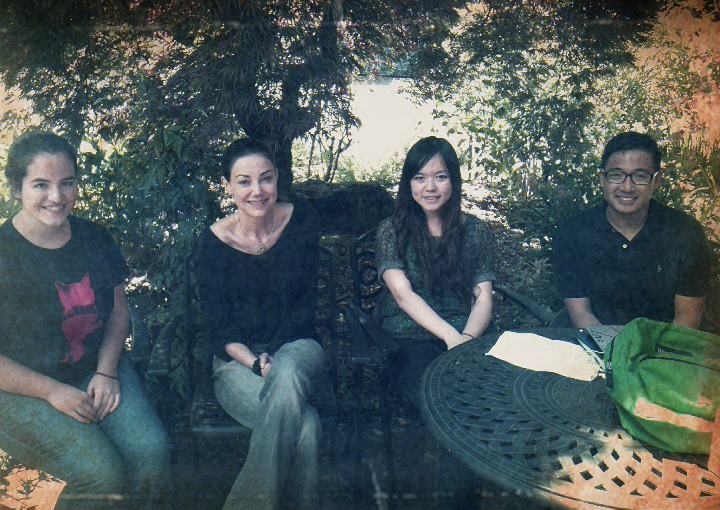Back to Volunteering > University Child Development School
Way Down Deep
by Ruth White (for children ages 5-105)
Ruth White’s Way Down Deep ennobles the tightly knit, child-centered village of Way Down Deep, West Virginia, as a measure of the American Dream.
The story turns on the relationship between the cherubic Ruby, abandoned in front of the courthouse in 1944, and her adoptive mother, Miss Arbutus Ward, owner of the boarding house, called The Roost. While “everybody says” that Miss Arbutus is “plain and dull,” the spinster comes to life through the love of her child, with whom she shares everything, including her dreams:
Last night I went to England. I saw Big Ben and Buckingham Palace, where the young princesses reside. I saw Stonehenge and the wild moors where the night wind goes moaning through the gorse, just like Mr. Thomas Hardy said in his books.
Ruby imagines: “I should like to go to England.” Their conversation continues:
‘Well, if we ever find old Archibald Ward’s treasure, we will go to England, and all over Europe.’ They smiled at each other in the looking glass. ‘But we will come home, won’t we?’ Ruby said. ‘We’ll always come home to Way Down.’ ‘Of course we will. I got homesick even in my dream.’
Miss Arbutus’s realization of homesickness as part of any journey invites similar feelings, especially for parents and guardians who may likewise dream of a simpler community that treasures childhood above all else.
It is no surprise that Ruby thrives in Way Down Deep; she goes to school, makes friends, and learns to help Miss Arbutus manage the boarding house. Her favorite responsibility is doing errands:
[Ruby] enjoyed all the jobs she was asked to do, but when it was learned that she preferred running errands on Busy Street to everything else, Miss Arbutus purchased a red Radio Flyer wagon for Ruby, and sent her out after school and on weekends to buy this, to buy that.
Ruby lights up her community with her red hair, her red wagon, and her bright spirit. The townspeople laugh as they watch her fending off the advances of her young suitor, Reese, who has a habit of singing to her at the top of his tuneless voice: “Now if you were a horsefly and I an old grey mare/I’d stand and let you bite me and never move a hair . . . . ‘Cause that’s how much I love you, baby!/ That’s how much I love you!”
Everything seems idyllic until, when Ruby nears the age of thirteen, “Robber Bob” and his family come to town, and the mystery of Ruby’s origins resurfaces. Bird, whose brain is “addled,” reveals another little girl who was supposedly eaten by panthers at the age of 3. Bird’s befuddled musings spark a revelation that will take Ruby on an odyssey away from her beloved “deep hollow,” up Yonder Mountain, and, finally, back to her hometown of Way Down Deep.
White, a master storyteller, uses Ruby’s journey to illuminate her minor characters: the “eleven-year-old identical Fuller triplets,” who sing “Mansion over the Hilltop” in three part harmony as the drunks file into the Beer Barrel; the little boy, Cedar, called a “juvenile delinquent” by his father, who is diagnosed with “cussitus,” by Mr. Doctor; Mrs. Rife, a ninety-year old who throws rocks at children—calling them “mangey strays”; and Jethro, Ruby’s pet goat, who stands on a Studebaker to get a good view of the town.
White presents the varied townspeople of Way Down Deep with such jocularity that they are impossible not to like. Perhaps their most unusual quality, however, is that they are so quick to forgive each other’s peccadillos, which is how they define most offenses. In a “teachable moment” Mr. Doctor models empathy to Cedar, who had targeted Mrs. Bevins for his ridicule:
‘I still say she looked like a bumblebee,’ Cedar mumbled stubbornly. ‘That may be, but your opinion doesn’t count, nor does mine. Mrs. Bevins believes her taste in clothes is impeccable, and in the long run, it’s only what one thinks of oneself that matters.’
Great books give us the wisdom to see clearly. White’s book, like my favorite Shakespeare play, A Winter’s Tale, bridges the seasons of life in a way that is accessible to children. White holds our hand gently as we journey through her book, making us laugh even while the characters confront the isolating agony of great loss and the ultimate joy of renewal and enlightenment.
The novel then serves as a whimsical parable, exploring the “way down deep” of the human experience; how the common longing for connection, forgiveness, and reconciliation can lead to a community strengthened by and rooted in acts of love.
I urge you then to celebrate Spring this Winter by reading Way Down Deep. You could choose to read the book in any number of ways: out-loud together with your family; as the selection for your child’s book club;. . . or maybe, as I did, while at the hair salon, covering those stubborn greys. Thanks to Way Down Deep, I walked out of the salon not only with more youthful-looking hair, but also, and far more importantly, with a more colorful heart.
— Holly Christine Woodson

